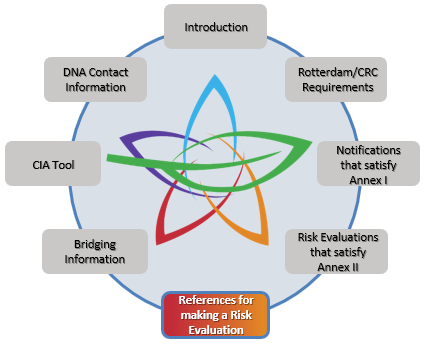The term “Risk Evaluation” is used by the Rotterdam Convention in relation to an evaluation of intrinsic toxicological and ecotoxicological properties and actual or expected relevant exposure, which may include information on actual incidents. One of the key criteria in Annex II of the Convention for listing chemicals under the Convention is to establish that the final regulatory action has been taken as a consequence of a risk evaluation.
More
The term Risk Assessment, according to the IPCS Risk Assessment Terminology (IPCS 2004), is "A process intended to calculate or estimate the risk to a given target organism, system, or (sub)population, including the identification of attendant uncertainties, following exposure to a particular agent, taking into account the inherent characteristics of the agent of concern as well as the characteristics of the specific target system. The risk assessment process includes four steps: hazard identification, hazard characterization (related term: Dose–response assessment), exposure assessment, and risk characterization. It is the first component in a risk analysis process.”
Key links
|
 |
To further support DNAs in their decision-making, scientific documentation is referenced and available here. The information is sourced from the Rotterdam Convention, reputable international organizations including WHO, FAO and other relevant IGOs, OECD, accredited institutions and national agencies.
The documentation is presented by subject matter including:
- Tools for making a risk evaluation
- Hazard identification and classification
- Exposure
- Bridging information
- Risk evaluations on Annex III chemicals
- Annex I verified notifications
- Annex II verified notifications for each region
As some developing countries do not have the requisite resources to carry out in-depth scientific analyses linked to risk evaluation of toxic substances, decision-making based on such scientifically sound evaluations may not be forthcoming. DNAs are, therefore, reminded that the use of bridging information is possible under the Rotterdam Convention.
In such situation, DNAs should seek to contact other DNAs both from developing countries and developed countries, especially in their region, to obtain information on making a risk evaluation. DNAs may also contact the Secretariat to request support on matters relating to the risk assessment of chemicals. Contact information is available on the DNA contact information section of the FRAE Toolkit.